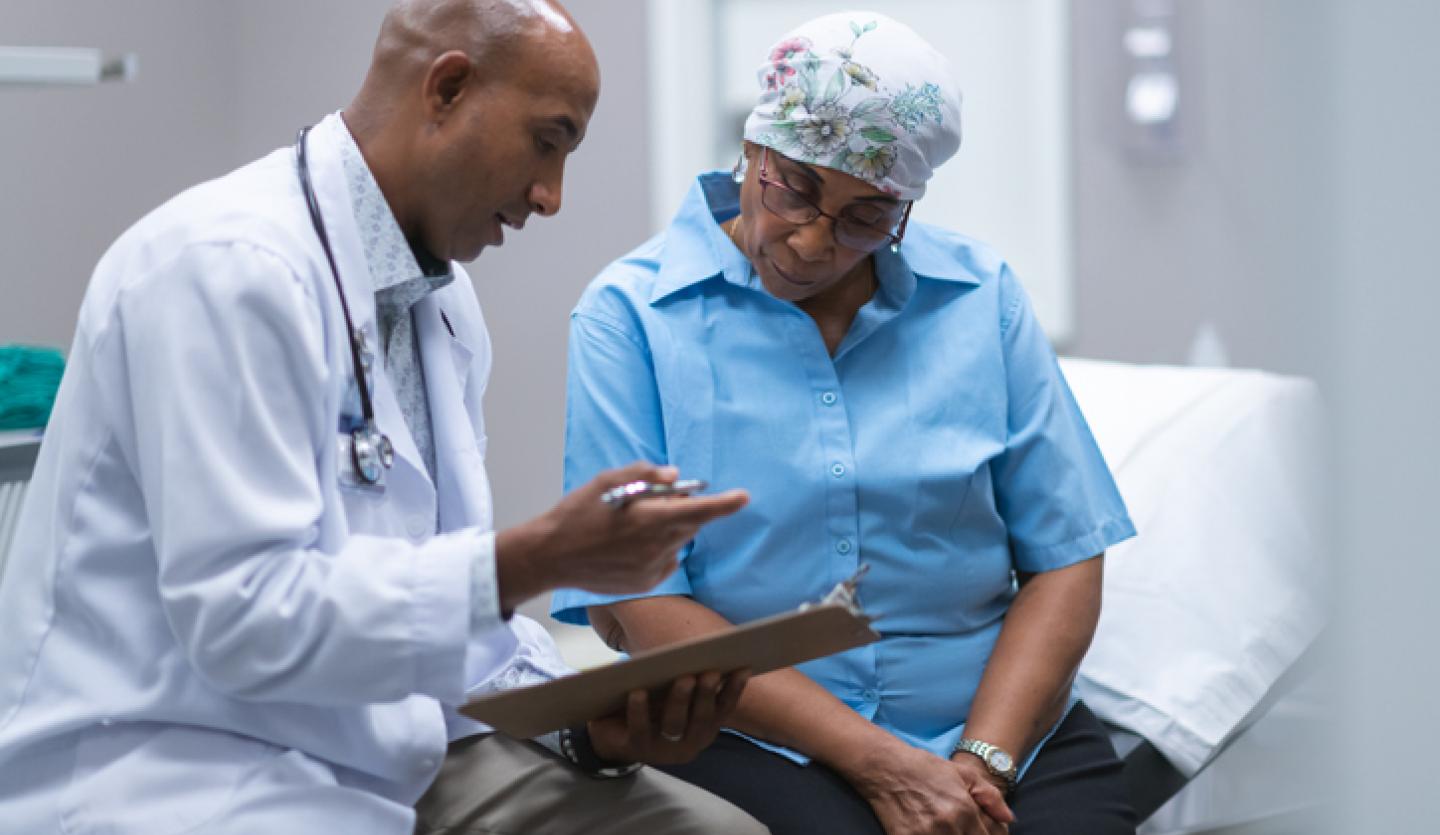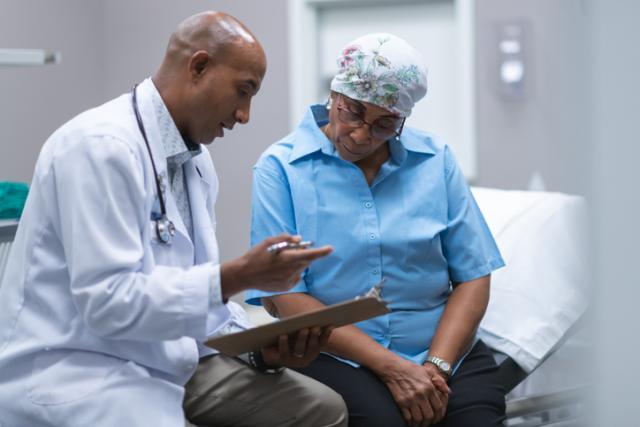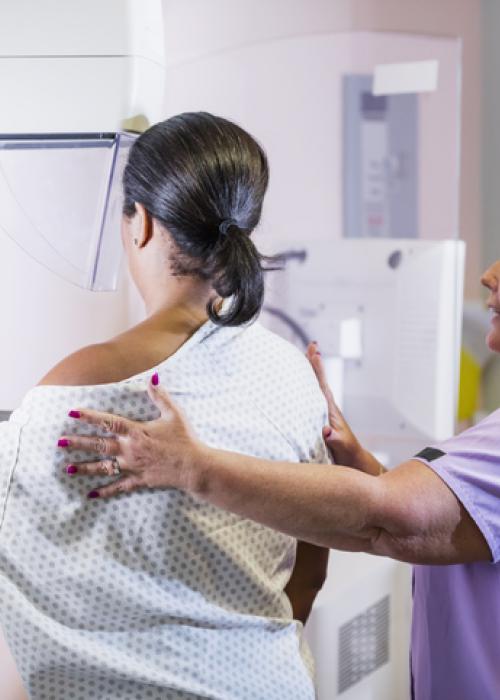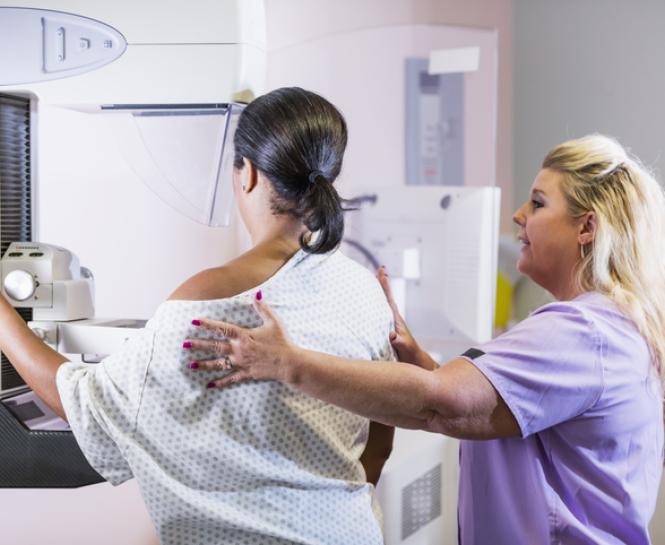If you are being tested for cancer or are recently diagnosed with cancer, your doctor and care staff will use terms that may be unfamiliar. But you do not have to be overwhelmed. Here are common cancer terms to help you navigate.
Tumor-related terms
A tumor is a grouping of cells that is unusual in some way. Old cells may not die when they are supposed to, or new cells may grow out of control.
Benign
A benign tumor is harmless. It does not spread, and it is not cancerous. Most benign tumors do not cause symptoms, and many do not require treatment.
Malignant
A malignant tumor is cancerous. It has the potential to spread to other areas of the body.
Metastasis
When cancer spreads from its original site to another area of the body, it is called metastasis. Cancer cells may travel through the body in the blood or lymphatic system (tissues and organs that carry white blood cells to fight infection and disease). When cancer has metastasized, it is typically known as stage 4 cancer.
Terms related to stages of cancer
When an oncologist (cancer physician) diagnoses someone with cancer, they assign a stage to the cancer. They use the tumor size and whether it has spread from its original site to determine the cancer stage.
Stage 1 is the earliest cancer stage. The tumor is small and has not spread beyond the original site. Stage 4 is the latest cancer stage. The tumor is large and has spread to distant areas of the body.
Cancer grade
Your oncologist will also assign your cancer a grade. The cancer grade reflects how aggressively and quickly the tumor is spreading. Cancer grades range from grade 1 to grade 4. Grade 1 is low-grade—the cancerous cells look almost like normal, healthy cells. Grade 4 means the cells are abnormal and likely growing and spreading quickly.
Terms related to cancer diagnosis
Your oncologist will typically use a series of tests to help diagnose, stage and grade your cancer. Learn more about common cancer screenings.
Urinalysis
During this test, you will provide a urine sample in your physician’s office or the hospital. Lab technicians will closely analyze the urine for sugar, protein, and red and white blood cells. Your physician can use this data to diagnose specific types of cancer and learn how cancer affects the body.
Complete blood count (CBC)
A CBC provides a comprehensive analysis of substances in your blood that may indicate the presence of cancer. Your oncologist may also use CBC levels to monitor your health while undergoing cancer treatment.
Learn more about routine bloodwork.
Tumor marker tests
These tests check for substances in the body that cancer may create or the body makes in response to cancer. Your oncologist can use the results of a tumor marker test to help diagnose cancer, determine your treatment plan or check on the success of your treatment.
Computed tomography (CT) scan
A CT scan uses specialized X-rays to create detailed images of the inside of your body from various angles. The CT machine then combines these images to create 3D images. Your oncologist uses these images to obtain details about your tumor(s).
Magnetic resonance imaging (MRI)
This imaging test uses a strong magnet and radio waves to create detailed images of the inside of your body. Your oncologist can use MRI images to pinpoint the exact location of your body's tumor(s).
Nuclear scan
This specialized imaging scan uses radioactive material to take detailed images of the inside of the body. You’ll receive the radioactive material through an injection (shot) before you undergo the imaging portion of the test.
Bone scan
This nuclear scan focuses on the bones. Your oncologist can use the images from a bone scan to determine if the cancer has spread or damaged your bones.
Biopsy
During this test, your physician removes a small tissue sample (biopsy) from the tumor. They then send the biopsy to the laboratory for close analysis.
Terms related to cancer treatment
Your oncologist uses your cancer grade and stage to help determine the cancer treatment plan they believe will work best for you.
Prognosis
Your prognosis is your chance of recovery after you undergo cancer treatment. Your oncologist uses your overall health and your cancer type, stage and grade to determine your prognosis.
Adjuvant therapy
You may need adjuvant therapy or secondary treatment after your primary cancer treatment. Adjuvant therapy aims to reduce the cancer’s chance of recurrence (coming back). Depending on your needs, types of adjuvant therapy include:
- Chemotherapy—cancer-killing drugs.
- Hormone therapy—adding, removing or blocking certain hormones that affect the cancer’s growth.
- Immunotherapy—using your immune system to help fight cancer.
- Radiation therapy—using specialized X-rays to destroy cancer.
Targeted therapy
This personalized cancer treatment focuses on affecting specific proteins, genes or other molecules within the cancer cells.







